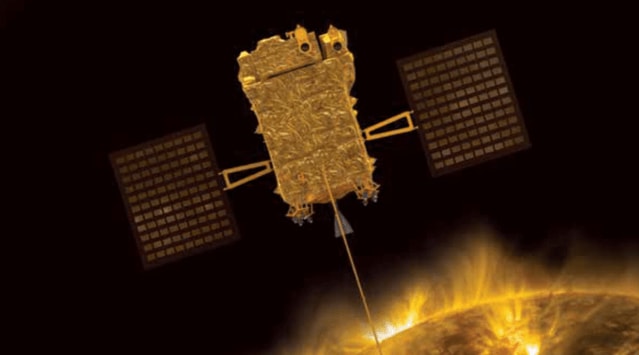Moon mission done, ISRO aims for the Sun with Aditya-L1 launch on September 2
It will be India's first dedicated space mission for observations of the Sun to be launched by the Bengaluru-headquartered space agency.
 The space agency said the spacecraft would be launched by PSLV-C57 rocket. (Image Source: ISRO/Twitter)
The space agency said the spacecraft would be launched by PSLV-C57 rocket. (Image Source: ISRO/Twitter) ISRO confirms the launch date for its high-anticipated sun mission — Aditya-L1 just a few days after the soft landing of the Pragyan rover on the south pole of the moon. According to the official tweet, ISRO will launch the PSLV-C57 for the Aditya L1 mission on September 2.
This is the first space-based Indian observatory to study the Sun from ISRO, which will be scheduled for launch on September 2, 2023, at 11:50 IST from Satish Dhawan Space Center in Sriharikota. Interested users can register themself on ISRO’s official website to witness the PSLV-C57 rocket launch from the Launch View Gallery at Sriharikota.
The mission Aditya-L1 from ISRO will travel for a total distance of 1.4 million kilometers from Earth, which is four times as far as the moon. First, the spacecraft will be placed in a low earth orbit, and then it will be made more elliptical to launch towards the Lagrange point (L1) using onboard propulsion.
🚀PSLV-C57/🛰️Aditya-L1 Mission:
The launch of Aditya-L1,
the first space-based Indian observatory to study the Sun ☀️, is scheduled for
🗓️September 2, 2023, at
🕛11:50 Hrs. IST from Sriharikota.Citizens are invited to witness the launch from the Launch View Gallery at… pic.twitter.com/bjhM5mZNrx
— ISRO (@isro) August 28, 2023
Named after Italian-French mathematician Josephy-Louis Lagrange, Lagrange points are positions in space with enhanced regions of attraction and repulsion, produced by gravitational forces of the Sun and the Earth, which can be used for the propulsion of the spacecraft.
Aditya L1 mission will carry 7 payloads to observe the photosphere, chromosphere and corona in different wavebands. The mission consists of a Visible Emission Line Coronagraph (VELC) payload designed and developed by the Indian Institute of Astrophysics (IIA) Bengaluru. Similarly, it also includes the Solar Ultraviolet Imaging Telescope (SUIT), developed by the Inter-University Centre for Astronomy and Astrophysics, Pune.
These will help ISRO to collect data on how Corona’s temperature can reach over a million degrees while the sun itself has a peak temperature of over 6000 degrees Centigrade.
“The SUITs of Aditya L1 payloads are expected to provide the most crucial information to understand the problem of coronal heating, coronal mass ejection (CME), pre-flare and flare activities and their characteristics, dynamics of space weather, propagation of particle and fields etc,” ISRO said.
As the spacecraft continues to travel towards L1, it will exit from the earth’s gravitational sphere of influence (SOI). During the cruise phase, the spacecraft will be injected into a large halo orbit around L1.
According to ISRO, this mission involves a total travel time of about four months from launch to L1 with a distance of 1.5 million kilometers.
The major objective of ISRO’s Aditya L1 mission is to get a deeper understanding of the sun, which includes coronal heating and solar wind acceleration, coupling and dynamics of the solar atmosphere, solar wind distribution and temperature anisotropy.







